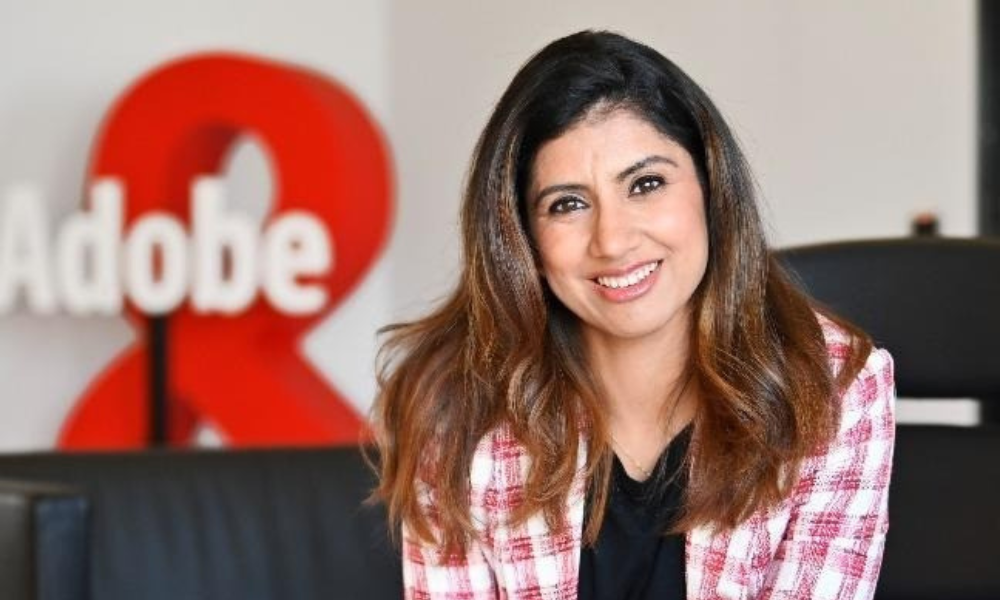
Head of Employee Experience ANZ told HRD initiatives are no longer just ‘good to have’

In today’s work environment, employee engagement is no longer driven solely by things like compensation and career growth – they are defined more by ensuring people feel truly supported, informed and valued.
Increasingly, long-term engagement is anchored in both wellbeing and change management initiatives – something global software company, Adobe, ties together perfectly to produce mobile teams.
This approach to wellbeing and incentives ensures Adobe’s people feel revitalised at every opportunity to ensure they can contribute to global growth.
“These are no longer separate HR initiatives—they are strategic imperatives that shape how people connect with their work and their company,” Adobe’s Head of Employee Experience across Australia and New Zealand, Nidhi Chopra, told HRD.
One key initiative Adobe offer is the ‘Learning Fund’ – allowing for employees both personal and professional development. This is something Chopra herself has taken advantage of to complete coaching qualifications.
Another is the ‘Education Fund,’ to support workers study at university or complete digital courses.
This is particularly relevant in ensuring organisations can continue to stay at the very top of their game.
“The pace of change in tech is relentless,” Chopra joked, “That’s why we see wellbeing not as a perk, but as a business necessity to keep people energised and engaged.”
It’s initiatives like this that awarded the company an award nomination at the Australian HR Awards 2025.
Chopra outlined that wellbeing is built on personalisation, giving employees flexibility to choose benefits that suit their life stage and circumstances.
“Our approach to wellbeing is grounded in choice,” she said.
“At different stages of life, employees need different types of support—whether that’s time off, financial assistance, or professional development.”
Adobe’s program extends beyond traditional perks to include enhanced leave policies, mental health resources, flexible schedules, and substantial education reimbursement.
“We’re not designing for an average employee,” Chopra added. “We’re designing for a workforce with diverse needs.”
By having wellbeing strategies that are holistic and meet the needs of different people at different times, Chopra outlined that you are able to grow alongside the employee and support them on their long-term career.
“We are very transparent about all our benefits. It's nothing that is just for internal employees. All people who are attracted to Adobe and want to join can see what they'll get,” she added.
Equally critical, Chopra noted, is how organisations navigate change.
For Adobe, transformation is constant—from shifting business models to integrating AI into workflows. “Change can be uncomfortable, but it doesn’t have to be chaotic,” Chopra emphasised.
“Employees want clarity—what’s changing, why it’s changing, and how it will affect them.”
Effective change management starts with listening. “I go into change conversations without assumptions,” she said.
“My role is to ask the right questions—What’s the purpose? What does success look like? This ensures employees feel part of shaping the journey.”
Transparency in this circumstance is key, Chopra argued.
“Leaders don’t need all the answers on day one. But they do need to communicate frequently. Silence creates uncertainty—communication builds confidence.”
Chopra noted that the more communication is better than waiting for the “perfect response” – this can be done through simplifying communication to break down complexity of large-scale change.
The link between wellbeing and change is most visible during transitions.
“Wellbeing isn’t separate from change—it’s what helps people navigate it,” Chopra explained. “A strong framework gives employees the resilience they need to handle uncertainty.”
With AI transforming work, Adobe embraces a “customer zero” approach, letting employees test tools early.
“AI adoption isn’t just a technology project—it’s an engagement strategy. Employees aren’t just watching change happen—they’re helping shape it,” she said.
Ultimately, Chopra believes engagement is intentional. “Sustained engagement doesn’t happen by chance. It’s built through support, transparency, and giving employees a meaningful role in the journey.”
Chopra has over 17 years of experience in shaping people strategies and unlocking talent potential as part of executive teams. Having worked across a number of industries – including travel and insurance in India – she has been exposed to a number of HR operations.
That experience proved pivotal. It honed her analytical skills, developed her ability to form evidence-based points of view, and built her confidence in working with executive leaders. “It taught me that my role as an HR professional is to advise with conviction, while recognising that business leaders own their decisions,” she reflected.